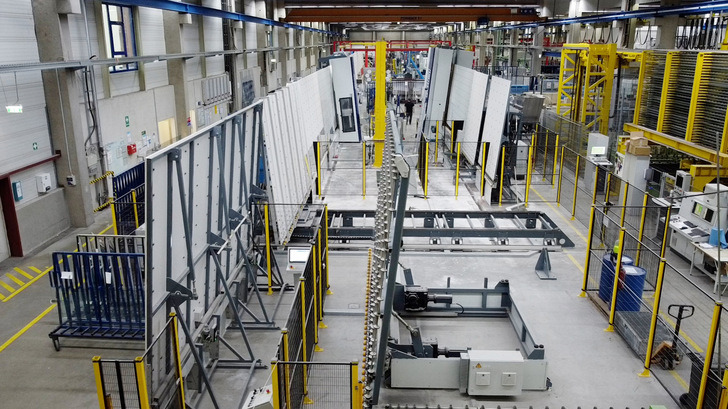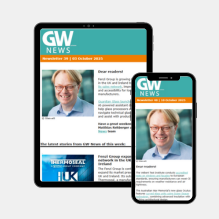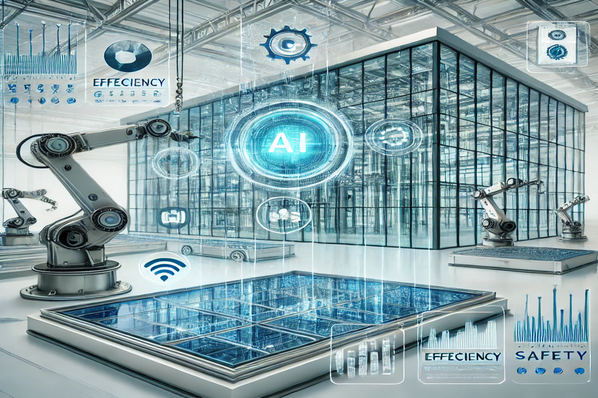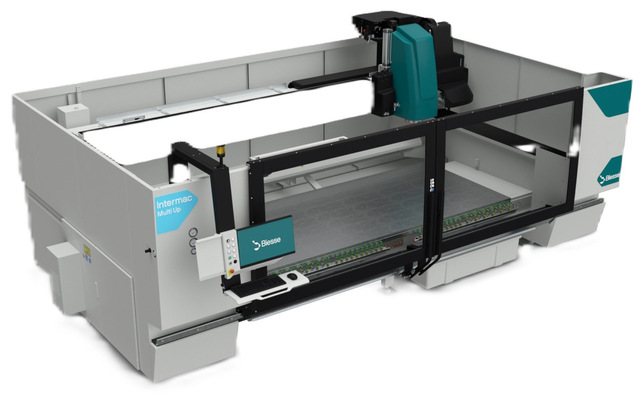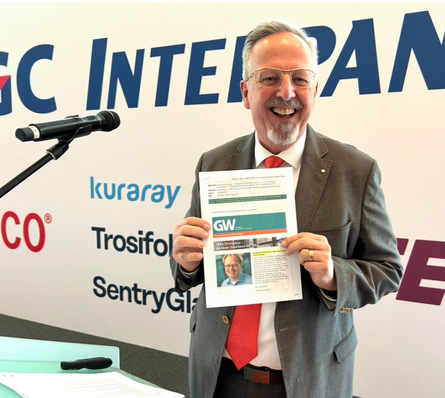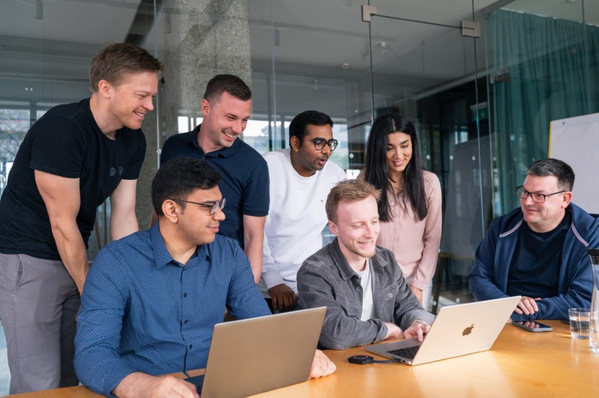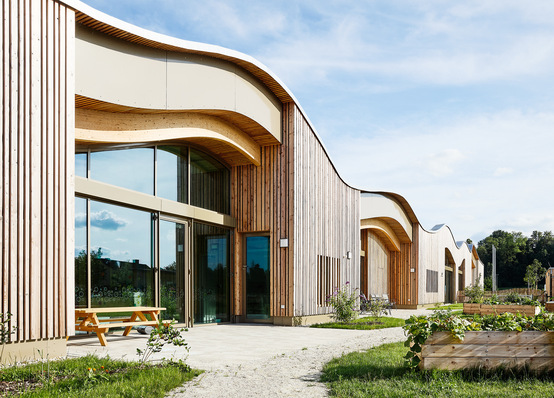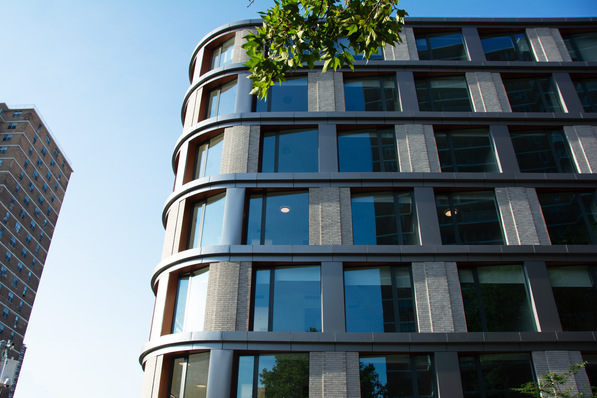As early as 1959, when company founder Alfred Arnold invented a new multi-pane insulating glass, it became clear that the Arnold-Glas Group - which now includes 5 other locations in addition to arcon in Feuchtwangen - would set standards in the glass industry. Well-known products such as sunbelt and sunlite solar control glass, arconnect high-frequency radio transparent glass, Ornilux bird protection glass and all types of decorative and safety glass are manufactured by arcon. Investment decisions are characterised by process optimisation and sustainability. The acquisition of the systron line three and a half years ago was a further step towards automation and increased efficiency.
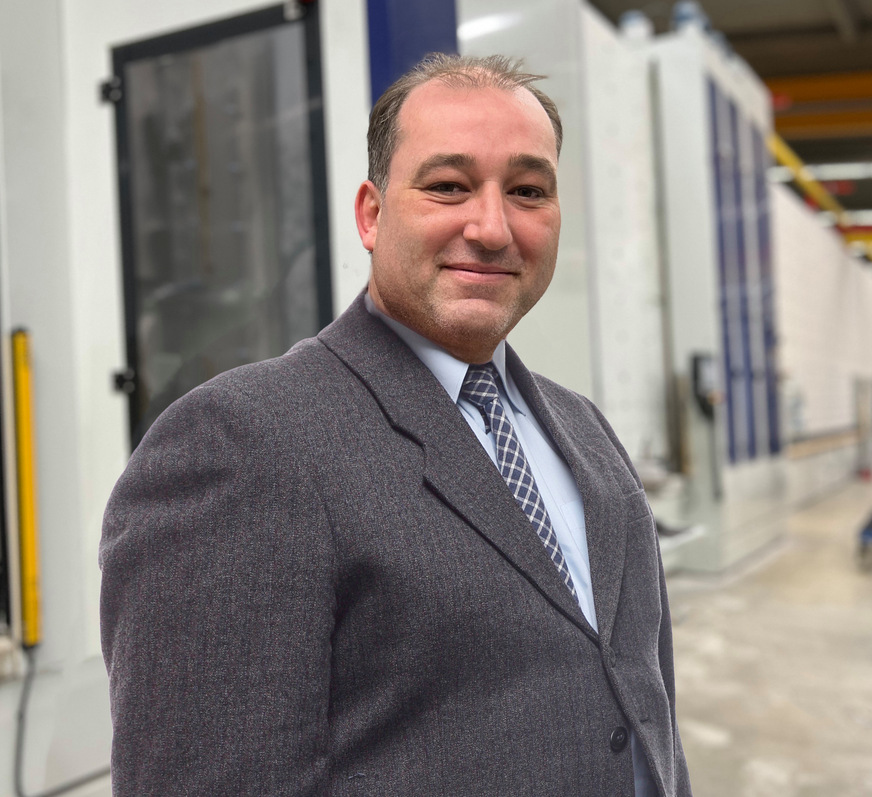
systron
Requirements for systron
Markus Biswanger, Plant Manager at arcon in Feuchtwangen, was involved in the entire procurement process and explains the conditions and requirements: "In the old cutting process, we had two or three people who manually removed each glass after cutting and transported it to the individual machines. We wanted every glass to be processed fully automatically, from the warehouse to the cutting system to the tempering furnace." To achieve this, a tilting table with a turn shuttle was installed after the existing Hegla cutting table, which transports the glass to the seaming line. The es1 is followed by a washing machine and a 53 metre long transport line with two line passages.
See also: A glass coating machine for treating panes as and when needed
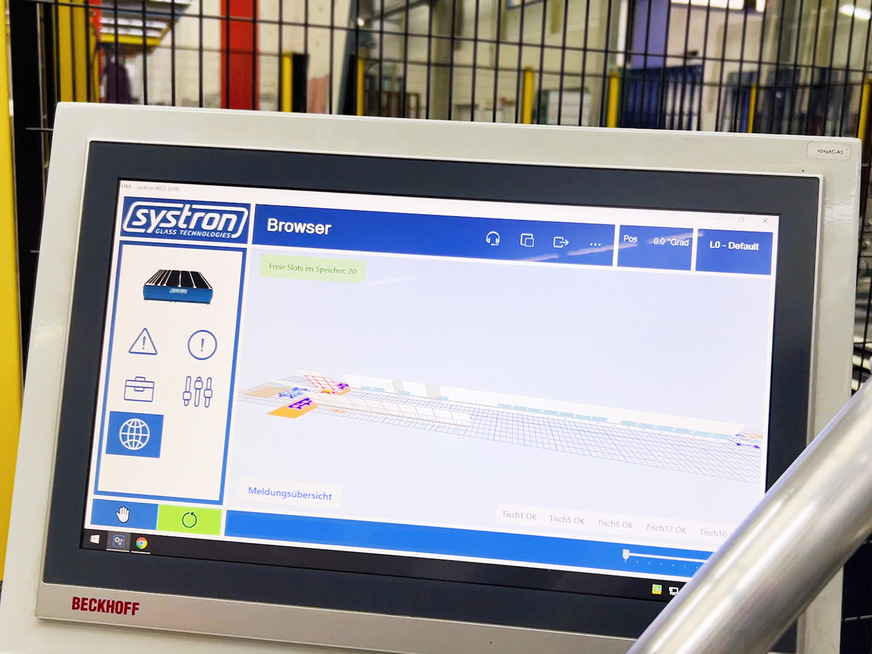
systron
To complete the automation to the tempering furnace, a tilting table and an air cushion table ensure further transport. "Due to the long distance, we only have one person at the cutting system. Additional glass panes can also be fed in manually via the cross shuttle. That was the requirement and that's how it was implemented," says Biswanger.
Optimisation of resources
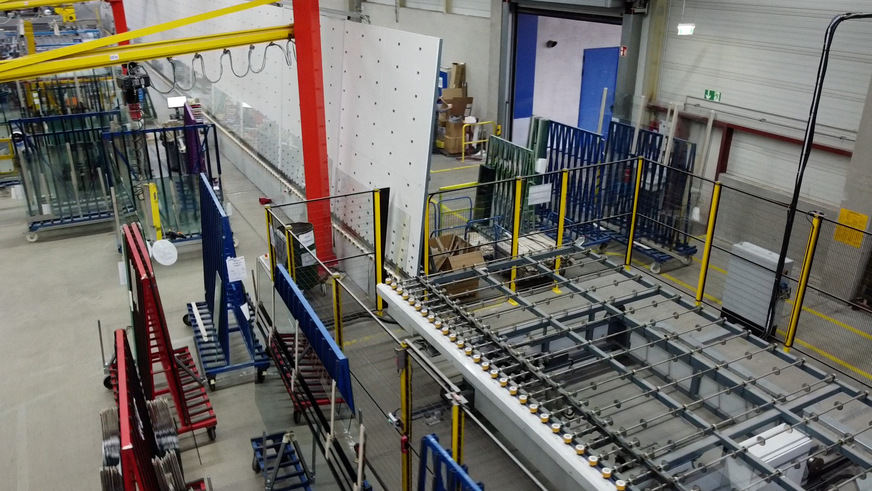
systron
The systron proHD CNC glass processing centre with integrated waterjet cutting is located directly opposite the es1 seaming line. This is loaded either directly by the operator or via systron's 20-slot storage unit. "Our proHD is used exclusively to produce one-offs, which is why we don't run unmanned here. We use it to produce 99% customised panes up to 3.2 x 6 m, in various thicknesses, with cut-outs, recesses, countersunk holes and any edge processing." Biswanger adds: "We have placed the two systron systems face-to-face so that the operator of the proHD can also control the seaming line if required; all he has to do is turn round and the master screen is immediately in front of him." There are also additional terminals at 3 positions that show a visualisation of the entire production process of all systron systems in real time. This means that production can be kept fully in view with very few staff resources.
Interfaces and interlinking
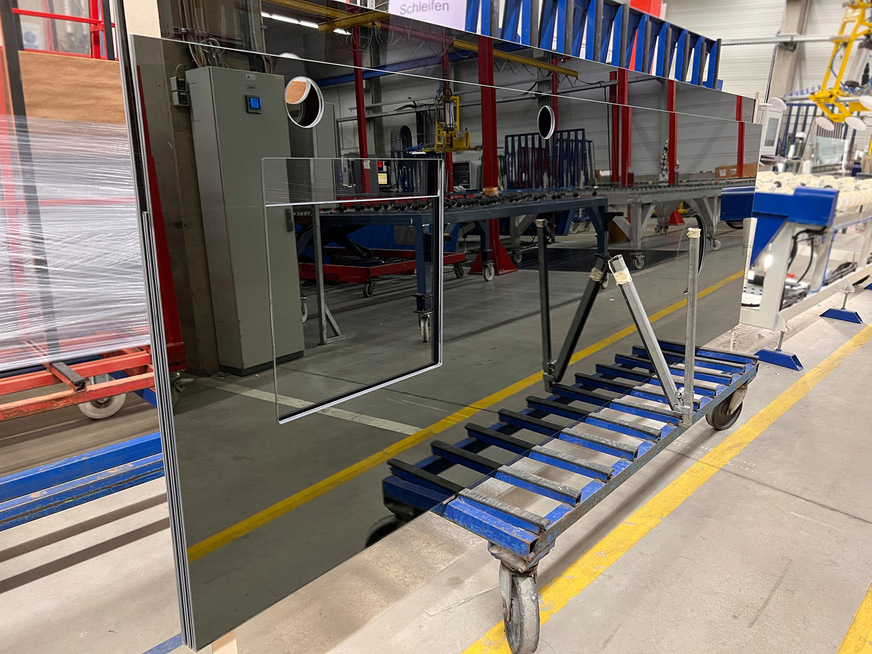
systron
As is usual with projects of this size, integration into production played a key role. The Hegla cutting table and the tempering ovens were already there, but programming the interfaces to the third-party systems and interlinking the various units were crucial for smooth automation. "The orders arrive automatically on the computer. As soon as a barcode is scanned in production, the data is on the system. The operator is only involved to repair wear and tear or to change tools," explains Biswanger.
Stability and accuracy are essential
It is extremely important for arcon that the seaming line runs reliably. At peak times, it supplies two hardening furnaces, where continuous capacity utilisation is of course essential. Andreas Winter, CEO of the Arnold-Glas Group, comments: "The systron es1 impresses with its stability and functionality. Since its installation at the beginning of 2020, the seaming line has been running 100% reliably. Maintenance also works flawlessly and that is a very important point, especially for the seaming line, because if this system had an unplanned downtime, there would be no alternative on site and we would be faced with a major challenge." On the company's general future course, he says: "We always try to focus on forward-looking investments. Be it in our systems, where our aim is to purchase energy- and space-saving machines with the highest possible output, or in our infrastructure. We renovated the roofs of our halls and fitted them with photovoltaic elements. This will enable us to generate an average of two megawatt hours of electricity, which covers around a third of our total requirements in Feuchtwangen. We have invested a lot in recent years to be able to look to the future with confidence."







